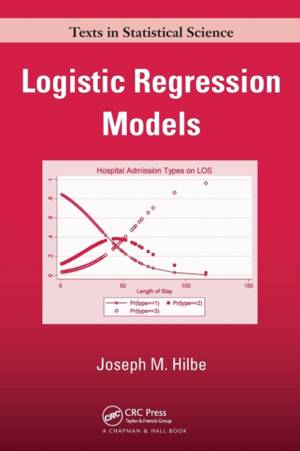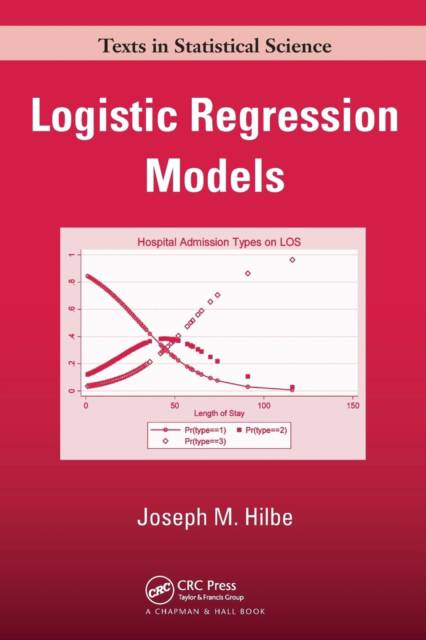
- Retrait gratuit dans votre magasin Club
- 7.000.000 titres dans notre catalogue
- Payer en toute sécurité
- Toujours un magasin près de chez vous
- Retrait gratuit dans votre magasin Club
- 7.000.0000 titres dans notre catalogue
- Payer en toute sécurité
- Toujours un magasin près de chez vous
Description
Logistic Regression Models presents an overview of the full range of logistic models, including binary, proportional, ordered, partially ordered, and unordered categorical response regression procedures. Other topics discussed include panel, survey, skewed, penalized, and exact logistic models. The text illustrates how to apply the various models to health, environmental, physical, and social science data.
Examples illustrate successful modeling
The text first provides basic terminology and concepts, before explaining the foremost methods of estimation (maximum likelihood and IRLS) appropriate for logistic models. It then presents an in-depth discussion of related terminology and examines logistic regression model development and interpretation of the results. After focusing on the construction and interpretation of various interactions, the author evaluates assumptions and goodness-of-fit tests that can be used for model assessment. He also covers binomial logistic regression, varieties of overdispersion, and a number of extensions to the basic binary and binomial logistic model. Both real and simulated data are used to explain and test the concepts involved. The appendices give an overview of marginal effects and discrete change as well as a 30-page tutorial on using Stata commands related to the examples used in the text. Stata is used for most examples while R is provided at the end of the chapters to replicate examples in the text.
Apply the models to your own data
Data files for examples and questions used in the text as well as code for user-authored commands are provided on the book's website, formatted in Stata, R, Excel, SAS, SPSS, and Limdep.
See Professor Hilbe discuss the book.
Spécifications
Parties prenantes
- Auteur(s) :
- Editeur:
Contenu
- Nombre de pages :
- 656
- Langue:
- Anglais
- Collection :
Caractéristiques
- EAN:
- 9781138106710
- Date de parution :
- 25-05-17
- Format:
- Livre broché
- Format numérique:
- Trade paperback (VS)
- Dimensions :
- 156 mm x 234 mm
- Poids :
- 902 g

Les avis
Nous publions uniquement les avis qui respectent les conditions requises. Consultez nos conditions pour les avis.






